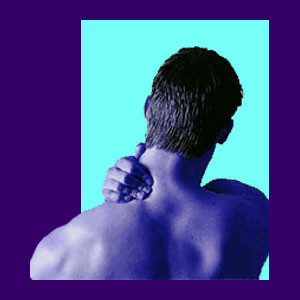
Torticollis, also commonly known as wry neck, is a condition which affects the structures of the neck and leads to a tilted and atypical head position. The physical characteristics of the condition include head tilting to one side, most often with the same side ear positioned behind the centerline of the shoulder, causing the chin to elevate and protrude towards the opposite side. This cervical spinal condition can come from different sources, including congenital issues, injury and other possible structural and nonstructural causations.
This essay delves into wry neck and details the causes, symptoms and treatments of this uncomfortable and often unaesthetic condition. If you need help coping or curing a wry neck condition, then you have come to the right place to find relief.
Congenital Torticollis
Some people are born with conditions which cause wry neck. In most cases, this is a soft tissue issue which affects the sternocleidomastoid muscle in the side of the neck. In other cases, the condition may be sourced by a tumor or other growth in the muscle itself or its attachments.
Many cases resolve without specific treatment, while others may require dedicated care and possibly even surgical intervention. Generally, the sooner the condition resolves, the less likely it is to enact any permanent effects on the child.
In some instances, the diagnosis of congenital wry neck is made right after delivery and the actual causation is injury which took place during the birthing process. This is not congenital wry neck and is often grounds for litigation if injury can be traced to negligence on the part of the hospital or obstetrician.
Acquired Wry Neck
Wry neck which comes on later in life can be the result of many different causative processes. Injury to the neck muscles or upper cervical vertebrae are the most common reasons for a tilted neck condition. However, certain types of infections (commonly of the inner ear), tumors and ligamentous concerns can also cause the condition without any trauma occurring.
Wry neck can also be sourced as a side effect of certain drugs, particularly some anti-psychotics.
Spasmodic Torticollis
This particular form of wry neck is most often seen in middle aged patients who slowly develop the condition over time. In these patients, the neck muscles contract, often violently, in uncontrollable set or random patterns, causing the head to tilt and often lock in place for a time.
Most cases are idiopathic and may have genetic markers which make certain people susceptible to the condition. Other cases are the direct result of another primary health issue, such as cervical or cerebral injury, infection, drug use, central nervous system disorder or metabolic disease.
Some doctors in the mindbody industry have theorized that many idiopathic forms of spasmodic wry neck are actually ischemia syndromes which have targeted the sternocleidomastoid muscle or surrounding structures. In these cases, patients may consider using an appropriate alternative treatment, such as knowledge therapy.




